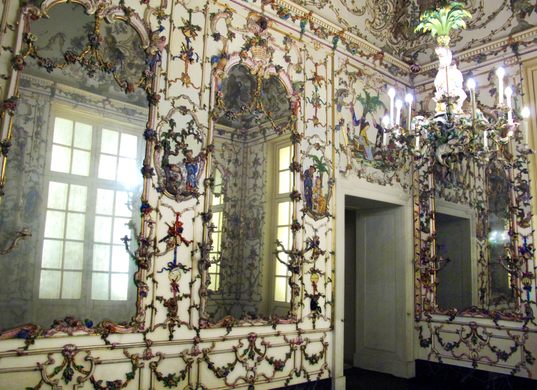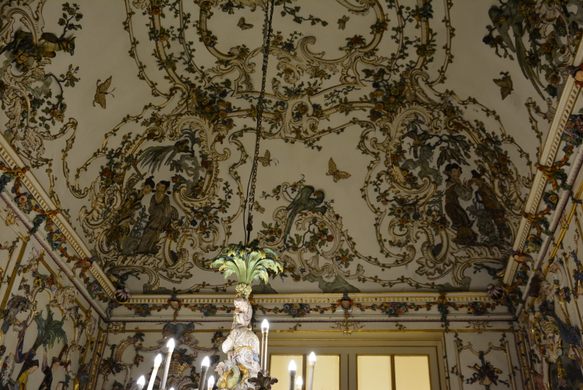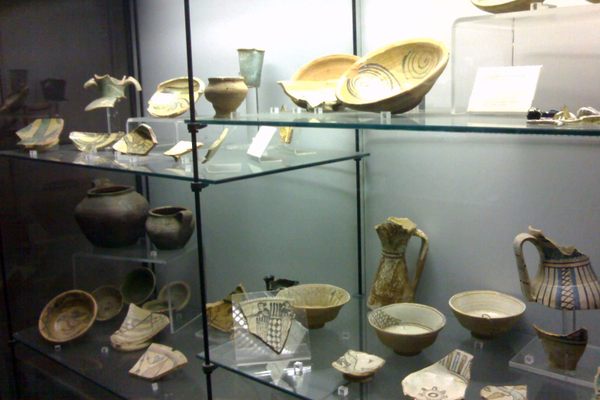AO Edited
Porcelain Boudoir of Maria Amalia of Saxony
A rococo room covered entirely in porcelain originally constructed for another royal residence.
The Capodimonte porcelain factory, located on the Capodimonte hill on the outskirts of Naples, produced some of the most outstanding examples of Italian porcelain during the mid-18th century. The greatest work to hold this factory’s hallmark is the Porcelain Boudoir commissioned by the Queen of Naples, Maria Amalia of Saxony.
Constructed between 1757 and 1759, the room was originally crafted inside the Palace of Portici, the new residence of the royal family completed just a few years prior. The project was personally supervised by Amalia and saw contributions from many artists. The room is covered by over 3,000 white pieces of porcelain, decorated with festoons and genre scenes. The room also revels in chinoiserie, the European imitation of Eastern Asian art that was popular at the time. Since the manufacture of porcelain was a technology known only to the Chinese until the 18th century, the room’s stylistic references to Asia can be seen through this lens.
Not long after the project was completed, the queen moved to Madrid when her husband became the king of Spain. There, the royal couple founded another porcelain factory and commissioned a replica of the porcelain boudoir for the Palace of Aranjuez.
In 1866, after all Bourbon possessions became the property of the Kingdom of Italy, the entire room was dismantled and reassembled inside the Royal Palace of Capodimonte. The palace is also home to a museum partially dedicated to the Capodimonte porcelain factory.
















Follow us on Twitter to get the latest on the world's hidden wonders.
Like us on Facebook to get the latest on the world's hidden wonders.
Follow us on Twitter Like us on Facebook